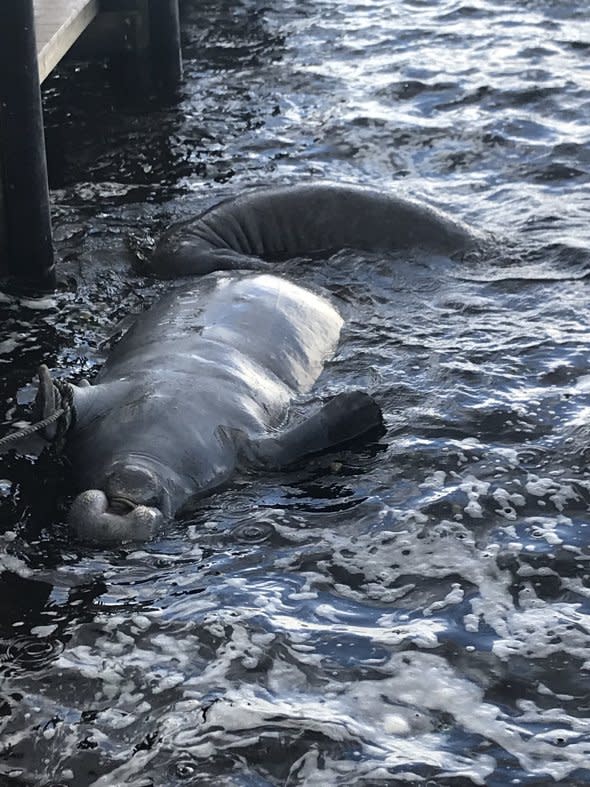Worst red tide bloom in over a decade kills hundreds of marine mammals along Florida's west coast
The ongoing toxic algae bloom is considered to be the longest red tide outbreak for the Gulf of Mexico in over a decade, and officials say it will most likely last until 2019.
High concentrations of toxic algae, known as blooms, have affected at least 120 miles of the peninsula's Gulf of Mexico coast since November 2017.
Officials say nearly 300 sea turtles have died because of the toxic bloom. Pelicans, manatees and a whale shark have also washed ashore since this unprecedented bloom started.

Dead manatee in Cape Coral, Florida. (Image via twitter/travisthompson)
Not only does red tide affect marine life, but it also poses health risks to beachgoers along the west coast of Florida.
Red tide blooms produce toxic chemicals that can affect both marine organisms and humans. The Florida red tide organism, known as K. brevis, produces brevetoxins that can affect the central nervous system of fish and other vertebrates, causing these animals to die.
Wave action can break open K. brevis cells and release these toxins into the air, leading to respiratory irritation.
For people with severe or chronic respiratory conditions, such as emphysema or asthma, red tide can cause serious illness.

Florida Fish and Wildlife officials work to successfully rescue a manatee in distress. (Photo/Susan Smart/Florida Wildlife Commission)
Lt. Col. Jennifer Reynolds, a deputy district engineer with the Army Corps, gave a 40-minute presentation to frustrated residents of Cape Coral, Florida, explaining why they had to release nutrient-laden water from Lake Okeechobee when the level of the lake approaches 15 feet above sea level, because a major rain event could lead to catastrophic flooding around the lake and the loss of lives and property.
The release of nutrient-laden water from Lake Okeechobee, combined with high temperatures have triggered this toxic algae bloom unlike anything southwest Florida has ever seen.
These images are of Sanibel, taken 7/29. We have a crisis here, our rivers, canals and coastlines are riddled with Red Tide/Toxic Algae blooms. Thousands of fish, turtles dying. pic.twitter.com/txGBwUk8z8
— JennR (@Jenn_Robinson11) July 29, 2018
"The Florida Fish and Wildlife Conservation (FWC) has been monitoring this bloom since it started in November 2017. FWC staff have been out in the field to confirm species identification and location, estimate of number dead fish and obtain samples from fish carcasses," spokesperson for the Florida Fish and Wildlife Conservation Commission's Fish and Wildlife Research Institute Michelle Kerr said.
According to the FWC, the first record of a marine mammal die-off caused by red tide occurred off the southwest coast of Florida in 1946 and 1947.
RELATED:
What is red tide?
How to identify red tide
How a sea breeze can make or break a day at the beach
